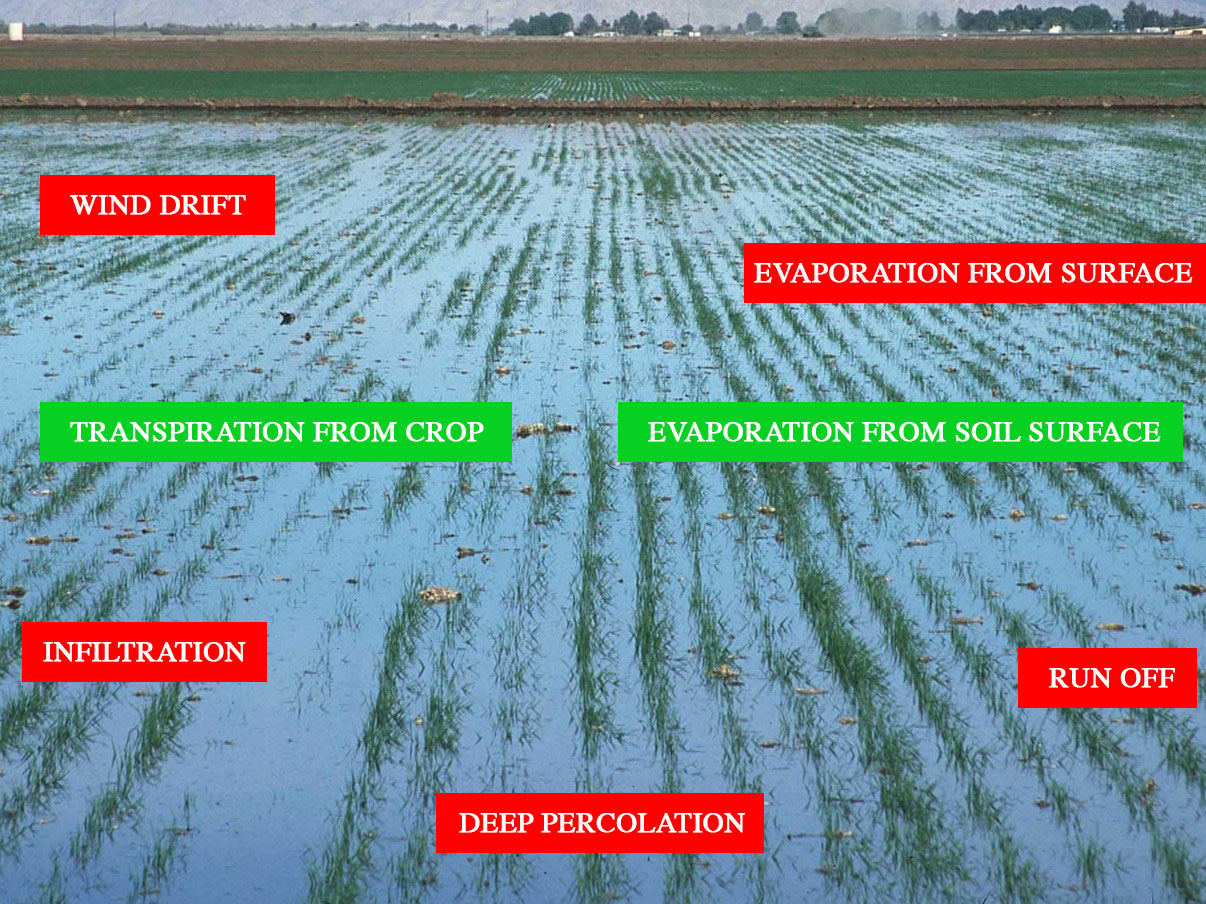Welcome to Jain Irrigation Systems Ltd.

Blog at Jains - HOW MUCH WATER DOES MY CROP NEED?
This question is getting more intense and raised more often as the scarcity for water increases. Historically, the query was never raised in the past, as no one doubted about the availability of water. "It is always there" so why bother to ask at all. In the changing scenario, where water resources are no more available to use it as we wish, humans started measuring, estimating, and looking for opportunities to improve water productivity, conserve water or reduce its consumption. This phase has come into the crop agriculture also.
Where does all the water go after one irrigates a crop field?

Fate of Irrigation water; only two components, Transpiration and Soil surface evaporation (in green) form the Crop water use. Only in drip method these two components alone can be applied to the crop. All the rest (in red) are avoidable sinks for irrigation water.
In precision Irrigation the water given would only be equal to the sum of Transpiration (which increases as the crop grows and the canopy becomes large) and evaporation from exposed soil surface (which decreases as the crop cover increases ). The goal of perfect irrigation is to reduce the second component of water loss, surface evaporation. In conventional irrigation major part of water loss is not these two essential sinks but the rest (red in the photo).
Here when a farmer asks the question, HOW MUCH DOES MY CROP NEED? The answer is the ETP (evaporation plus transpiration). Accordingly I have estimated the water required for a good high yielding sugarcane crop. The difference among the regions is due to difference in evaporation rate during the growing season of the crop. In this case the 12 month period of sugarcane.
How Much water I need for sugarcane crop?
| WR mm | m3/ha | |
| Dry Peninsular region (Maduari/Chitoor) | 1469 | 14690 m3 |
| Coastal Peninsular region (West Godavari) | 1558 | 15580 m3 |
| Central dry Plain region (Adilabad/Sholapur) | 1466 | 14660 m3 |
| North temperate region (Punjab/UP) | 968 | 9680 m3 |
These water requirements of the crop can be applied to precision only through drip method. In conventional method water is applied till the field is filled up with water and therefore the components of water loss (in red) removes a major portion of the applied water from the field. This fraction of water is actually wasted and not used by the crop resulting in very low water use efficiency and water productivity.
For a 12 month crop duration, sugarcane requires only 14660 m3 to 15580 m3 water per hectare to produce 150 –250 t/ha yield under drip –fertigation assisted precision farming in the central and south peninsular India. Its requirement is 9680 m3 in north temperate region where low temperature restricts growth for 3–4 months. In this region the productivity is also comparatively low, 150–175 t/ha. Applying water as per the estimates above is possible only through drip method of irrigation. In conventional irrigation system the whole season consumes 25000 m3 on average in all these regions and the productivity of sugarcane ranged from 70–87 t/ha only.


